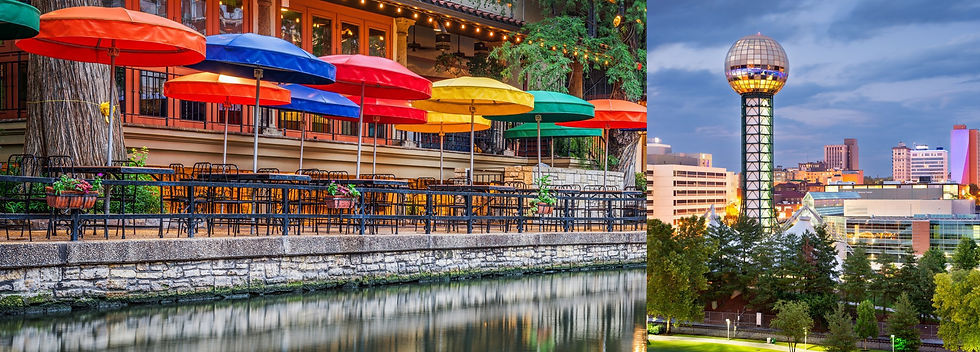
World's Fair Legacies
From Expos to Economic Engines
From the Space Needle in Seattle to San Antonio’s Tower of the Americas and River Walk expansion, the United States has a proud tradition of hosting world expositions that leave behind more than memories. Each Expo creates a signature landmark that defines its city skyline while seeding lasting economic growth for generations.
These iconic structures — the Sunsphere in Knoxville, the U.S. Pavilion and Riverfront Park in Spokane, and San Antonio’s River Walk district — are more than monuments to the past. They continue to anchor tourism, conventions, and cultural life, producing hundreds of millions to billions of dollars annually in economic activity.
U.S. World’s Fairs demonstrate a powerful legacy formula:
-
A physical landmark that becomes the city’s enduring symbol.
-
An ongoing tourism and development engine that fuels jobs, business growth, and global visibility long after the Expo gates close.
America’s World’s Fair Legacy
From Innovation to Iconic Landmarks
For more than a century, World’s Fairs in the United States have defined eras of innovation and left enduring landmarks that shape city skylines, economies, and cultural identities. These Expos were not just temporary celebrations — they became permanent engines of progress, turning ideas into infrastructure and imagination into investment.
A Legacy Written in Steel and Skyline
Each U.S. World’s Fair has left behind a visionary structure that continues to symbolize the spirit of its host city:
-
Seattle (1962) – The Space Needle and Seattle Center remain defining icons of the Pacific Northwest, driving tourism, hospitality, and major events more than 60 years later.
-
San Antonio (1968) – HemisFair ’68 transformed downtown San Antonio with the Tower of the Americas, the River Walk expansion, and a legacy of urban renewal that still powers billions in tourism and convention activity.
-
Spokane (1974) – Expo ’74, the first environmentally themed World’s Fair, gave rise to Riverfront Park and the U.S. Pavilion, anchoring the city’s renaissance and sustainability leadership.
-
Knoxville (1982) – The Sunsphere stands as a symbol of renewable energy aspirations and has since become a cultural and tourism hub in the heart of downtown.
The Expo Legacy Equation
Every U.S. World’s Fair has followed a legacy formula that transforms a temporary exposition into a permanent civic catalyst:
A Landmark Built to Inspire
Each Expo creates an architectural icon — a tower, sphere, or pavilion — that becomes an enduring emblem of progress and pride.
A Platform for Economic Growth
These landmarks ignite ongoing visitor economies, supporting hotels, retail, conventions, and tourism districts that thrive long after the Expo gates close.
A Community Investment Multiplier
Infrastructure, parks, and cultural districts built for the Expo continue to return value — socially, economically, and environmentally — for generations.
Expo 2031 Minnesota: The Next Chapter
Now, more than half a century after America’s last World’s Fair, Expo 2031 Minnesota, USA will extend this proud legacy.
Rooted in horticulture, agriculture, and future living, it will once again unite architecture, innovation, and community vision — ensuring that the next great American landmark grows from the heart of Minnesota.







.png)








